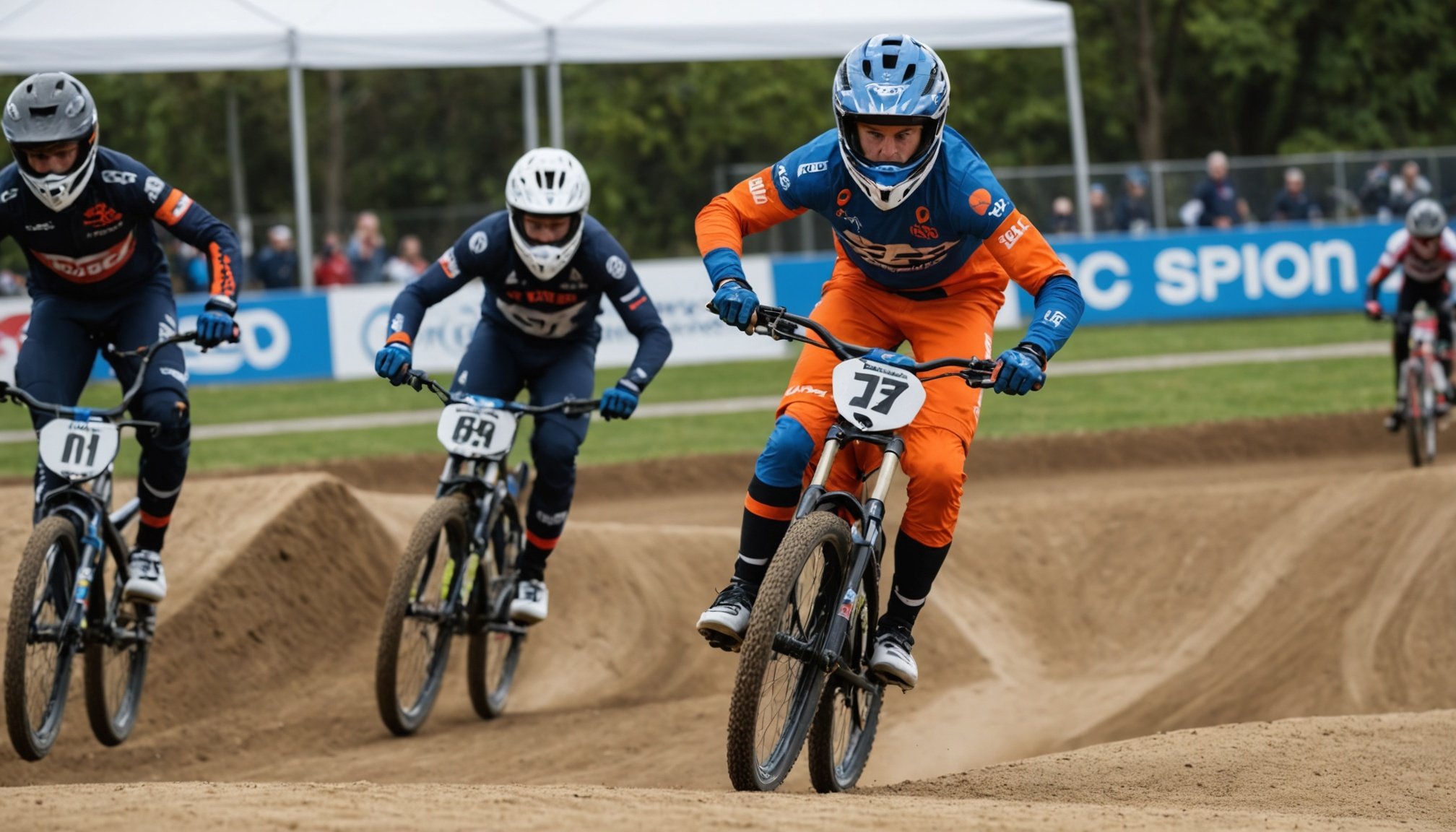Unlocking BMX Success: Harnessing Video Analysis to Boost Your Racing Tactics
In the fast-paced world of BMX racing, every fraction of a second counts, and the margin between victory and defeat can be incredibly slim. To stay ahead of the competition, athletes and teams are increasingly turning to advanced tools and techniques to optimize their performance. One of the most powerful tools in this arsenal is video analysis. In this article, we will delve into how video analysis can be used to boost your BMX racing tactics, providing a comprehensive guide on how to apply this technology to enhance your performance.
Understanding the Power of Video Analysis
Video analysis is not a new concept in sports, but its application in BMX racing has become more sophisticated and accessible in recent years. This technology allows athletes and coaches to break down every aspect of a rider’s performance, from the start gate to the finish line.
In parallel : Ultimate guide to preventing muscle cramps for long-distance runners during races
“Video analysis is a game-changer for BMX athletes,” says John, a coach for a national BMX team. “It allows us to identify tiny flaws in technique that can make a huge difference in racing times. By analyzing these videos, we can provide targeted feedback that helps our riders improve faster and more efficiently.”
Here are some key ways video analysis can be used to enhance BMX performance:
Also to discover : Thriving under pressure: essential focus techniques for dressage competitors
- Technique Improvement: By slowing down and replaying critical moments of a race, athletes can see exactly how they are executing jumps, turns, and other maneuvers. This helps in identifying areas where technique can be refined.
- Time and Speed Analysis: Video analysis software can measure the time taken to complete different sections of the track, allowing riders to optimize their speed and pacing.
- Comparative Analysis: Coaches can compare videos of different riders, including competitors, to identify best practices and areas for improvement.
- Mental Preparation: Visualizing successful runs and analyzing mistakes can also help with mental health and preparation, allowing athletes to better manage stress and focus.
Setting Up Your Video Analysis System
To start harnessing the power of video analysis, you need the right equipment and software. Here’s a step-by-step guide to setting up your system:
Equipment Needed
- High-Quality Cameras: Ideally, you would use multiple cameras positioned around the track to capture different angles of the rider.
- Drones: For a more comprehensive view, drones can be used to capture aerial footage.
- Software: There are several video analysis software programs available, such as Hudl, Kinomap, or even basic video editing software like Adobe Premiere Pro.
Software Features to Look For
- Slow Motion and Frame-by-Frame Analysis: This allows for a detailed examination of every move.
- Drawing and Annotation Tools: These help coaches highlight specific points of interest in the video.
- Time and Speed Metrics: Automated tools that measure time and speed can provide valuable data.
- Cloud Storage and Sharing: For easy access and collaboration among team members.
Practical Applications of Video Analysis in BMX Racing
Here are some practical ways to apply video analysis to your BMX training programs:
Pre-Race Preparation
Before a big race, video analysis can help athletes visualize the track and plan their strategy.
“For our athletes, we use video analysis to walk them through the track, identifying key sections where they can gain an advantage,” explains Sarah, a coach at a university cycling team. “We also analyze videos of past races to understand how different riders approach the track.”
Post-Race Review
After a race, video analysis is crucial for reviewing performance and identifying areas for improvement.
“Immediately after a race, we review the video to see what went well and what didn’t,” says Mark, a professional BMX rider. “This helps us adjust our training programs to focus on the areas that need the most work.”
Training Sessions
During training sessions, video analysis can be used in real-time to provide immediate feedback.
“We set up cameras around the track and review the footage with the athletes right after their runs,” says John. “This immediate feedback helps them make adjustments on the spot, which accelerates their learning process.”
Real World Use Case: Enhancing Racing Tactics
Let’s look at a real-world example of how video analysis can be used to enhance racing tactics.
Example: Optimizing Gate Starts
One of the most critical moments in BMX racing is the gate start. A good start can give a rider a significant advantage.
Here’s how video analysis can help optimize gate starts:
- Slow Motion Analysis: Review the start in slow motion to analyze the rider’s position, pedal stroke, and body alignment.
- Comparison with Top Riders: Compare the rider’s start with those of top competitors to identify best practices.
- Feedback and Adjustment: Provide feedback to the rider on how to improve their start technique and make necessary adjustments.
Table: Comparing Video Analysis Software for BMX
Here is a comparative table of some popular video analysis software that can be used for BMX racing:
| Software | Key Features | Cost | User Reviews |
|---|---|---|---|
| Hudl | Slow motion, drawing tools, cloud storage | $10-$20/month | 4.5/5 |
| Kinomap | GPS tracking, time and speed metrics, social media sharing | $5-$15/month | 4.3/5 |
| Adobe Premiere | Advanced editing features, multi-camera support | $20-$30/month | 4.7/5 |
| Dartfish | Automated analysis, real-time feedback | $50-$100/month | 4.8/5 |
Stories of Success: How Video Analysis Has Boosted Athlete Performance
Several athletes and teams have seen significant improvements in their performance after incorporating video analysis into their training programs.
Case Study: Mark’s Journey to the Top
Mark, a professional BMX rider, credits video analysis for his recent success in national competitions.
“Before I started using video analysis, I was struggling to improve my times,” Mark explains. “But once I began reviewing my rides and making adjustments based on the feedback, I saw a significant improvement. I was able to shave off precious seconds from my lap times and eventually won a national championship.”
Tips and Advice for Implementing Video Analysis
Here are some practical tips and advice for athletes and coaches looking to implement video analysis into their training:
Start Small
Begin with basic equipment and software. As you become more comfortable with the technology, you can upgrade to more advanced tools.
Consistency is Key
Make video analysis a regular part of your training routine. Consistent review and feedback are crucial for long-term improvement.
Collaborate with Your Team
Involve your entire team in the video analysis process. This includes coaches, trainers, and even other riders who can provide valuable insights.
Use Social Media to Share Insights
Share your findings and insights on social media platforms to engage with other athletes and coaches. This can also help in building a community around your team.
Video analysis is a powerful tool that can significantly boost your BMX racing tactics and overall performance. By understanding how to set up and use this technology effectively, athletes and teams can gain a competitive edge in the world of BMX racing.
As John, the coach, puts it, “Video analysis is not just about watching videos; it’s about using those videos to tell a story of improvement and success. It’s the ultimate guide to unlocking BMX success.”
Whether you are a seasoned pro or just starting out, harnessing the power of video analysis can help you achieve your goals and reach new heights in the world of BMX racing. So, the next time you hit the track, remember that your performance is just a video away from being optimized.











